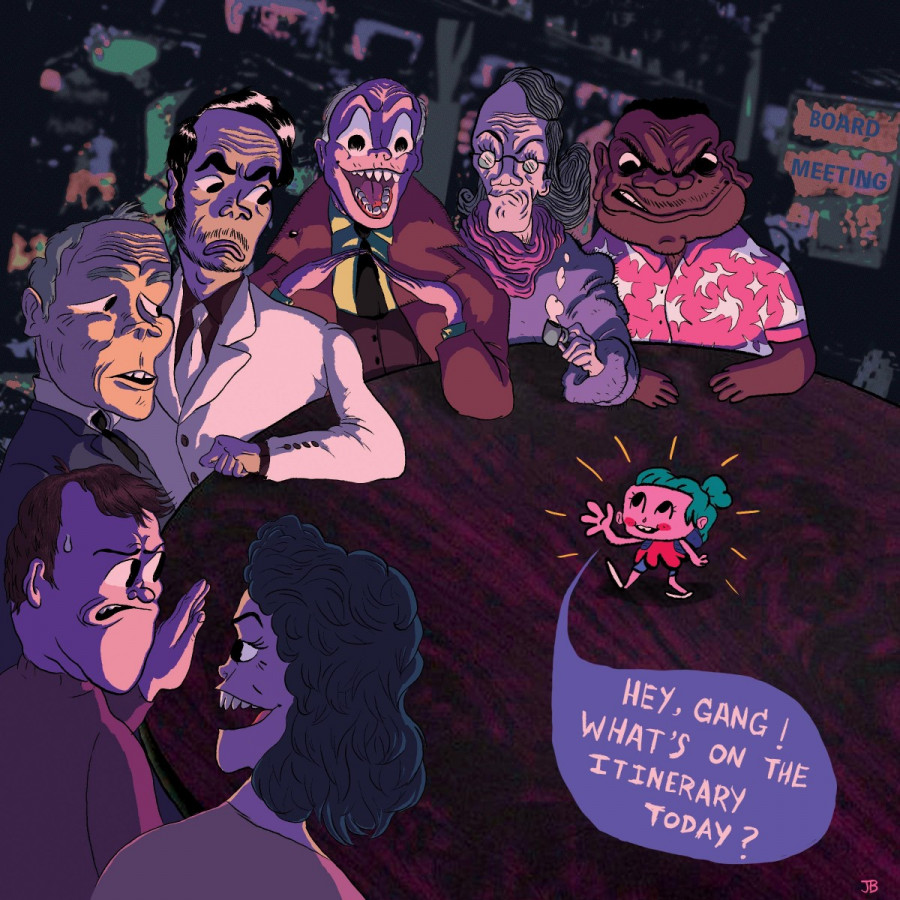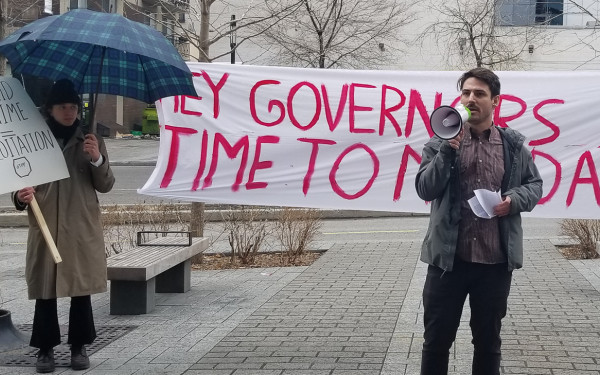History of Concordia’s Board of Governors
Where Are the Students, Why Did Their Bylaws Change, and How Can You Follow Along
The Link has been reporting on campus politics since 1980. Along with student associations, we follow the university’s highest decision making bodies, such as the senate and the Board of Governors, to keep students informed on the decisions that affect them directly.
Here’s an overview of one of them: the Board of Governors.
Representation: cont’d
Student leaders have criticised the board for its lack of student representation. Over the years, student representation within the board has dwindled. In 2011, the structure of the board was being remodeled.
At the time, a bill called Bill 38 that encouraged cuts to student representation on the board’s of Quebec’s universities was being tabled in the National Assembly. It was never passed, but President Frederick Lowy explained at the time that the bill was a major influence for Concordia’s board when they were in the process of creating their new structure.
When the board created its new structure it reduced in size from 40 voting members down to 25 voting members, and with that student representation on the Board went from 10 per cent down to four per cent.
Some History
In 2011, Concordia’s Board of Governors found itself it a bit of public relations nightmare. The school’s last president, Judith Woodsworth, had recently resigned, with little warning leading up to her departure.
The community was left confused. The board chose to not follow their own procedures for terminations as laid out in their bylaws, and gave little explanation as to why Woodsworth was leaving. They said that she had resigned for personal reasons, but later on Woodsworth reported to the media that she had actually been fired.
In the years leading up to that, five of the board’s vice-presidents had resigned, and in 2007, Woodsworth’s predecessor had also resigned. Even more, several external board members were still holding spots on the board, despite the fact that they have extended the limits of their terms.The Board’s reputation was sinking among the community, and its relationship with all the other bodies within the school was strained and conflict ridden. As the pressure rose, then-President Frederick Lowy decided to set up an external committee to review the board.
At the head of the committee was McGill President Dr. Bernard Shapiro, who was tasked with reviewing the board and providing it with suggestions on how to repair its instability and poor communication and mutual contempt that was prevalent between governors. T
he report was also led by André Côté, Quebec’s first Lobbyist Commissioner, and Glen Jones, Ontario’s Research Chair on Post-secondary Education Policy. Their research ran for 60 days, and each was paid $1,000 per day for their services.
While in the process of writing their report, the committee accepted a collection of anonymous critiques that came from the school’s faculties, staff, students, and alumni. In regards to that, the report mentioned that:
“It is not, we believe, an exaggeration to say that what we were experiencing was not a culture of mutual respect but, rather, a culture of contempt. Everyone seemed quite willing, in some cases even anxious, to think the worst of someone—in some cases, everyone—else. It seemed almost as if by projecting experienced difficulties on some other person or on some other group, one was relieved of any responsibility to question one’s own motives and behaviour.”
Following the report, the board rewrote its bylaws, charter, and remodeled its structure in an attempt to fix its issues with governance. The number of board members went from 40 down to 25 in an attempt to make the board a “more effective forum for discussion.”
Procedures were also put in place to ensure better communication between the board and the other bodies within the school, like the senate, and other procedures were set up to ensure that there would be checks and balances put in place to review the board and its member’s level of efficiency.
Use of Money
The Board has also been criticised for its use of severance packages, which are forms of payment that are given to administrators for the year following their departure. Throughout the 2015 to 2016 year, Concordia paid out almost $1.1 million to five senior administrators who left from their positions. Included within those five administrators was formed Chief Financial Officer Sonia Trudel, who was given $235,000 after only three months of holding her position.
Concordia had been punished by the Quebec government for this before, with a fine of $2 million. This was after the school issued a number of severance packages that amounted to over $3 million to former administrators over the course of 2009 and 2010. At the time, then-Quebec Education Minister Line Beauchamp called the payments excessive, saying that they created “concern about the use of public funds by universities.”
Keeping Up With the Board
If you want to want to follow what the Board of Governors is up to, live streams of the open sessions of their meetings can be watched on-campus in the Hall building. The schedule of their meetings can be found through the Concordia site, and from there, the room where the live stream can be found on campus will also be listed.
Other than attending the live streams, there’s no other way to view the meetings. Recording or broadcasting devices—with the exception of the camera that is used to live broadcast the meeting—are not allowed, as was decided in 2012.
In 2012, attempts were made by students representatives on the board to make meetings more open. Students asked the board to adopt some time set aside for an open question period, to add seating space for at least 50 members of the public, and to keep video archives of the meetings. The decision to ban recording devices came after these requests.
As a result, the Board of Governors exists as something that, in general, is very much separate from the Concordia community at-large. Only members of the board are allowed to access their meeting room on the fourth floor of the GM, and in recent months, security there has been amped up.
The floor itself is blocked off on days of board meetings. President Alan Shepard explained that the increase in security came as a reaction to the bomb threat that was made to the school on March 1, and says it’s been implemented to ensure the safety of the board.
As a result, the majority of students don’t come into contact with Board members, and unless they watch the livestreams of their meetings or follow the student press, the majority are unaware of what decisions the Board is making behind closed doors.
Read more about the Board of Governor’s here: https://thelinknewspaper.ca/article/a-primer-on-concordias-board-of-governors.


_600_832_s.png)




_600_375_90_s_c1.jpg)